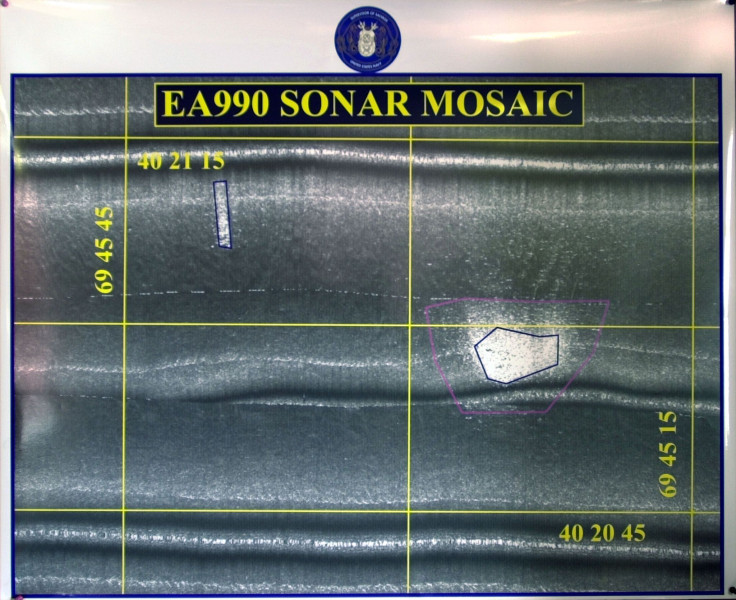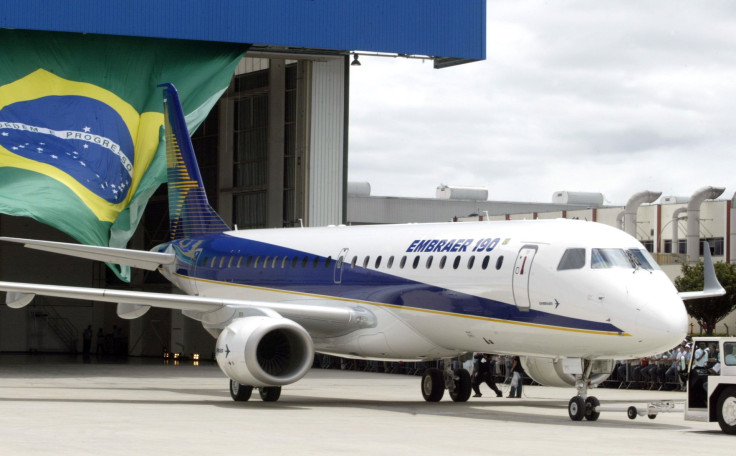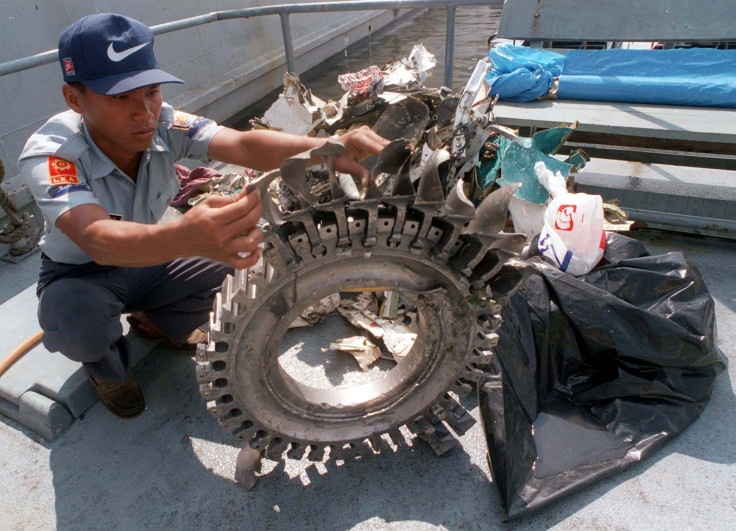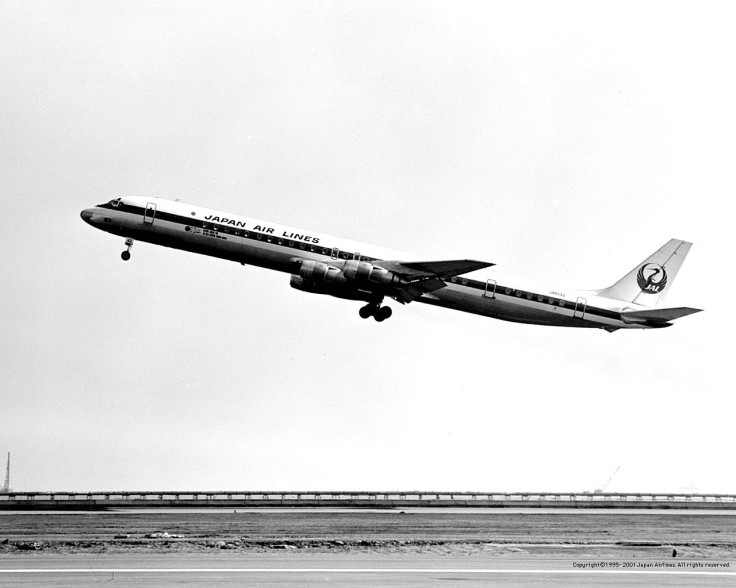Pilot Suicide: When It's The Captain Who Crashes The Plane

An airplane crash that killed 33 people last month in Namibia may have been pilot suicide, an extremely rare occurrence that brings to light an infrequently studied phenomenon: the mental health of aircrew.
Mozambique Airlines Flight TM470 went down on Nov. 29 in a remote area of the southwestern African nation while operating a scheduled passenger service from Maputo, Mozambique, to Luanda, Angola. The E-190 jet, manufactured by Brazil’s Embraer SA (BVMF:EMBR3), was just one year old. Weather in the area, other than heavy rain, was not dangerous.

According to a summary by Aviation Safety Network of the preliminary investigation results, the crash was quite possibly intentional. João Abreu, head of the Institute of Civil Aviation of Mozambique, said the jet dove toward the ground at 6,000 feet a minute. Data from the cockpit voice recorder indicate that minutes before the crash, the co-pilot left the cockpit for the bathroom, and returned to find the door shut. The flight data recorder, or black box, indicates according to preliminary results that the captain manually changed on the autopilot the flight altitude from 38,000 feet to below ground level. He also retarded the engine throttles to idle and manually selected the maximum operating speed -- a contradictory action that makes little sense. The voice recorder shows that someone, likely the first officer, pounded on the cockpit door before the crash. There was no mayday call from the experienced captain.
It isn’t officially known whether the captain had shown signs of mental issues; unverified rumors suggest he may have had marital problems, and that a son had died. He and the first officer had both passed their routine medical tests recently. What is certain, though, is that jetliners, especially almost brand-new ones with an excellent safety record, do not tumble spontaneously out of the sky from cruising altitude, and that the captain’s actions are inconsistent with the most basic airmanship.
The Embraer 190, flying since 2004, only had one previous accident: a 2010 Henan Airlines crash in Yichun, China, that killed 42 people during a landing attempt. That accident was attributed by a Chinese investigation to the crew’s inexperience, miscommunication and decision to continue with the landing despite visibility below the allowed minimums. In other words, the airplane wasn’t likely at fault.
The possible suicide of the Mozambican captain recalls similar incidents in recent aviation history, the most serious a 1999 crash of an Egyptair jetliner that killed 217 and whose cause remains disputed, with U.S. authorities blaming the captain’s likely suicide and Egyptian authorities refusing that conclusion.
The likelihood of a pilot’s mental illness or suicidal feelings resulting in a crash in the U.S. is low; the Federal Aviation Administration maintains very strict guidelines for evaluating the mental health of aircrew. Under FAA rules, no one suffering from psychosis, severe personality disorder, manic-depressive illness or substance dependence can be issued the medical clearance to fly an airliner. Captains are required to renew their clearance every six months and first officers every year. Hundreds of people get refused every year.
Still, accidents of this sort have happened around the world before the Namibia crash. Here is a list.
1999: Egypt Air 990
Thirty minutes after takeoff from New York on a nonstop flight to Cairo, the fully loaded Boeing 767, a 300-series long-range model, dropped from 36,000 feet to 19,000 feet in half a minute, an enormously fast dive that probably made the aircraft break up in several large pieces. At 19,000 feet the Boeing disappeared from radar; its pieces then hit the Atlantic Ocean. All 217 passengers and crew died. The investigation showed that pilot Gamal al-Batouti had muttered several times an Arabic phrase often associated with the moments before death, “I rely on God,” as the autopilot was disconnected and the plane entered a steep dive. The position of the tailplanes found amid the wreckage suggested that the person seated on the left, al-Batouti, had been pushing the yoke forward to make the plane dive, while the other pilot tried to pull up.
The U.S. National Transportation Safety Board concluded that no mechanical event could have caused the airplane’s behavior. Egypt never accepted the implicit conclusion that al-Batouti had intentionally crashed, and conspiracy theories flourished. Aviation writer and pilot William Langewiesche wrote a lengthy piece in the Atlantic magazine on the accident’s aftermath, arguing that the English-speaking Cairo upper classes knew full well that the Egyptian pilot had killed himself and everybody on board, but that the government chose instead to fuel speculation of an American coverup.

1997: Silk Air, Indonesia
In another case of likely but disputed pilot suicide, the U.S.-led NTSB investigation concluded that the crash had been the product of deliberate flight control inputs, likely by the captain. Indonesia said instead that its investigation proved inconclusive. The 737 Series 300 made by Boeing Co. (NYSE:BA) that crashed in a river in Palembang, Indonesia, was one year old at the time. The twinjet, piloted by Singaporean Tsu Way Ming, fell from 35,000 feet into a river in one minute, a dive so fast that it reached supersonic speed before breaking up, killing 104. The cockpit voice recorder had been cut off, something that can only be done by willingly disabling a circuit breaker.
An Australian journalist who investigated the accident wrote that some Indonesian authorities agreed with the American conclusion that Tsu did it, possibly while the first officer was out of the cockpit, but chose to keep that information under wraps. The captain had also been experiencing serious personal problems.

1994: Royal Air Maroc
Just after takeoff from Agadir, the 32-year old captain for the Moroccan national airline disconnected the autopilot and intentionally crashed the ATR-42 turboprop against a mountainside. All 44 on board died. Press reports said at the time that he had a troubled love life. Pilot unions initially disputed the conclusion that the pilot had killed himself, but the accident has since been considered a clear-cut case of aircrew suicide.
1982: Japan Air Lines, Tokyo
Captain Seiji Katagiri’s suicide attempt did not succeed, but 24 people died.
The facts were very clear: While on final approach into Tokyo’s Haneda airport on a DC-8 series 61 four-engined jet, the 35-year old Katagiri crashed the plane into the ocean by intentionally engaging the thrust reversers for the two inboard engines -- an action that requires a forceful pull on two levers in front of the engine throttles. The first officer and flight engineer tried to physically restrain Katagiri; on the cockpit voice recorder they are heard yelling “Yamete kudasai!” or “Please stop!” in Japanese.
Most of the 147 people on board survived after the plane hit the shallow water just short of the runway at relatively low speed. There was little doubt that Katagiri was mentally disabled: The airline admitted that he had had a ''psychosomatic illness'' in late 1980, but noted that he had been pronounced fit for duty later.

© Copyright IBTimes 2025. All rights reserved.






















